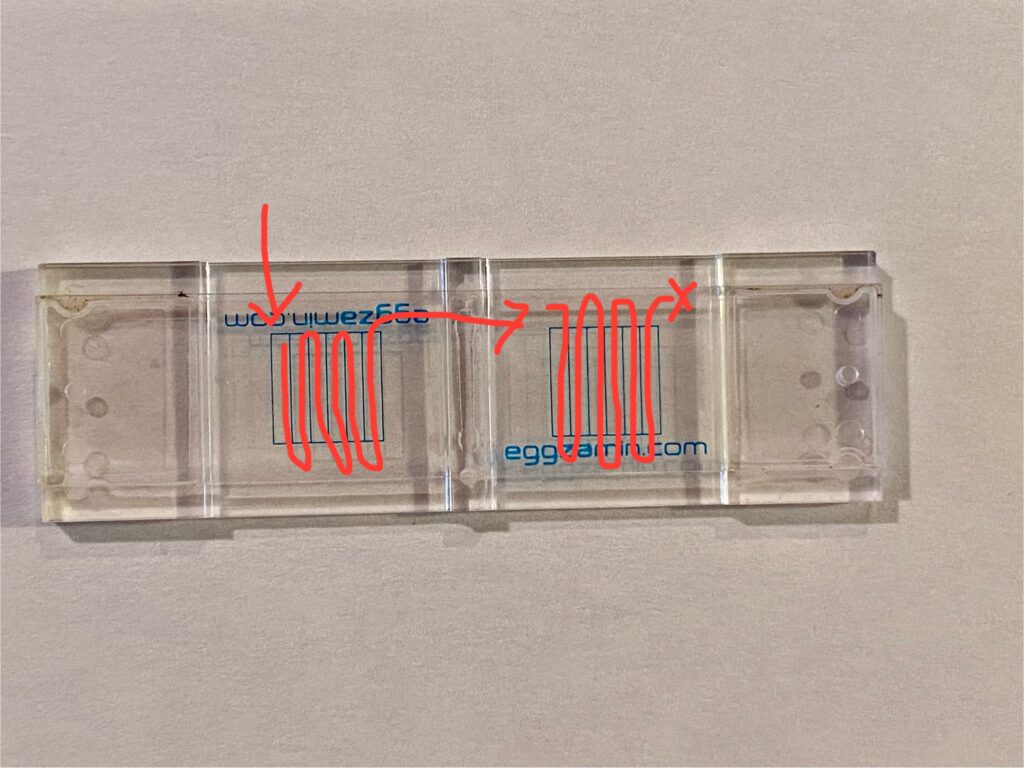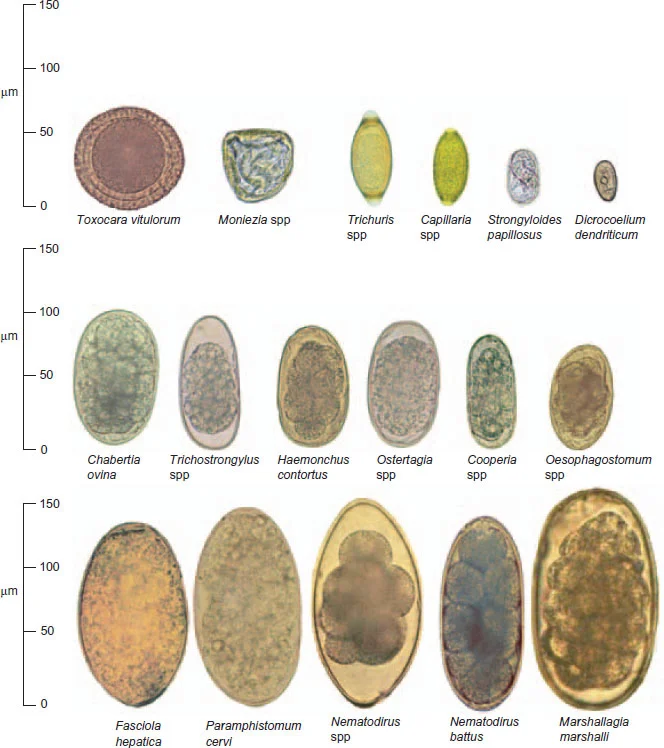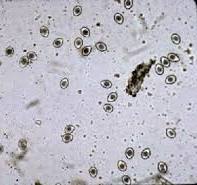Why?
Why learn to do your own fecal testing? There are some powerfully good reasons:
- Worms can be deadly. They can cause anemia, diarrhea, and can prevent your goat (especially kids) from gaining crucial nutrition needed to grow. If you do your own fecal tests, you can work proactively to prevent a large parasite load from developing.
- You also have the ability to look inside your goat to determine proper treatment for any illnesses immediately. No waiting for a sample to be mailed to a lab and then for them to do the test and get back to you. Sometimes, this access to immediate results can be the difference between life and death for your goat.
- If you have a herd of ten goats or more, you will save money over the long run. One should do fecal tests regularly: at least quarterly, and in high risk months, more often than that. And one should do follow-up fecal tests (within 5 to 10 days) to determine if your worming medications are successful. Our local vet charges $12/test. Ten goats = $120/quarter, or $480/year, without retests. You can see that an initial investment of about $300 in equipment will pay for itself in less than one year.
How?
Do NOT be intimidated at the thought of doing your own fecal tests. PLEASE!
- Fecal tests are not gross. In most cases, goat poops are pellets that do not smell bad in any way.
- The equipment is readily available and easy to use. Please watch the video linked below (8+ minutes). All supplies are listed with links below.
- You don’t need a dedicated space. I do mine in my kitchen, after a few safety precautions. (I clean up around the areas I’ll be using before and after testing with soap and water, and remove any open containers that might get splashed by a mistake.)
How hard can it be? Watch this video and find out!
NOTE one thing that I did not mention at the end of this video is that you MUST LET THE SLIDE REST for FIVE MINUTES before you view it.
AFTER 5 MINUTES sitting, the slide is ready to read. (When doing 4 samples at once, I will repeat the sink steps to make the other 3 samples into slides and then the first slide will be placed onto the microscope stage.)
How to read the slide:
Place the slide on the microscope stage, clipping it into place.
Move the stage so that you can see the top left corner of the left of the two grids on the McMaster slide.
Position your view so that you can start scrolling down the first “aisle.” Then focus…
Focus on the aisle boundaries printed on the McMaster slide (mine are blue). Make it crisp. You will probably see perfectly round air bubbles. They should also be in sharp focus. The eggs that you’re looking for will float on the surface of the fluid, so focusing on the aisle boundaries is proper.
There are six “aisles” on each of the two slide sections (12 aisles in all). Using the moving stage, scroll down the first aisle and up the second, etc., as diagrammed right.

- As you scroll, you are looking for one (or more) of three things, and counting them as you go:
- HOT worm eggs. (There are many kinds, and we home testers can’t tell them apart. The acronym stands for Haemonchus contortus or Barber’s Pole worm, Ostertagia trifurcataa, and Teladorsagia (brown stomach worms)–all of whom can damage the guts of our goats, sometimes unto death. Suffice it to say, if you see HOT eggs, count them. They are the problem.) They are oval shaped, and look like a bag of marbles. See examples below.
- Coccidia eggs (they look like hard boiled eggs cut in half, and are small compared to the other two (HOT eggs and tapeworm segments).
- Tapeworm segments. These are pentagonal, and about as large as the HOT egg sacks. NOTE: you can sometimes see tapeworms in poop with the naked eye. They look like tiny white worms.
For further guidance on what you’re looking for, use this handy reference chart, and see the pictures of coccidia and tapeworm below.

All of these are “bad eggs” varieties or HOT worm eggs.
NOT pictured here are coccidia or tapeworms.

These are coccidia eggs. Note that these are stained. They will be more faint (a tan color, with thinner edges) on your slide.

Here are tapeworm eggs alongside a HOT worm egg sack, so you can see their comparative sizes. They look square or pentagonal, and largely transparent.
The HOT worm in th bigger picture is a strongylid.
Resources
This PDF is where I learned to do McMaster slide fecal testing. Highly recommend that you print off these pages for reference: https://web.uri.edu/wp-content/uploads/sites/241/McMaster-Test_Final3.pdf. (The picture of the tapeworms above is from this document.)
The above document also contains great information for collecting feces!
List of needed supplies for testing:
- Microscope: Your choice, but you’ll need one with a moveable stage, and I highly recommend a two-eyed model. Here’s one possibility: https://amscope.com/products/c-b120?variant=41108514537647. You do need to have 4X and 10X objective lenses.
- McMaster slide(s): cheapest is $18/slide at this writing, if you buy 2 slides from Amazon.
- Knife or toungue depressors for stirring and mashing.
- A scale such as THIS ONE.
- Plastic cups: two per test run. Can rewash and reuse.
- Strainer, or cheesecloth.
- Flotation fluid (THIS BRAND is cheapest, shipped dry and reconstitute)
- Plastic pipettes.
- Straining technique – this can be a tea strainer; unfolded gauze 4” X 4” pads or squares; orcheese cloth cut into squares (6” squares preferred)
- Rubber gloves if desired (you’ll need them for collecting the feces).
Interpreting Results
As you scroll through each slide, you note the NUMBER of the three kinds of eggs (HOT, coccidia, and tapeworms). Below I list how we interpret these results, and react to them at Storybook Farm. Your vet may have different thresholds to recommend.
- For HOT worms, if we see more than 10, we treat the animal and then recheck according to the recommended recheck for each type of medication. For instance, with Cydectin, we retest in 4 days. With Prohibit, we retest in 10 days, since we can’t re-treat them before that time. In rechecking, I’m looking for an egg count of 0-3 or so.
- For coccidia, we don’t count. I almost always see random cocci eggs when testing. If I saw, say, 20 in a given set of 12 aisles, I’d treat for it. But if I see one to four, or so, I would not treat them, unless they had diarrhea.
- For tapeworms, I treat if I see even one segment. I want to stay ahead of those bad boys. Our go-to for goats who are NOT PREGNANT is Valbazin. If does are pregnant, we treat for tapeworms with Safeguard.